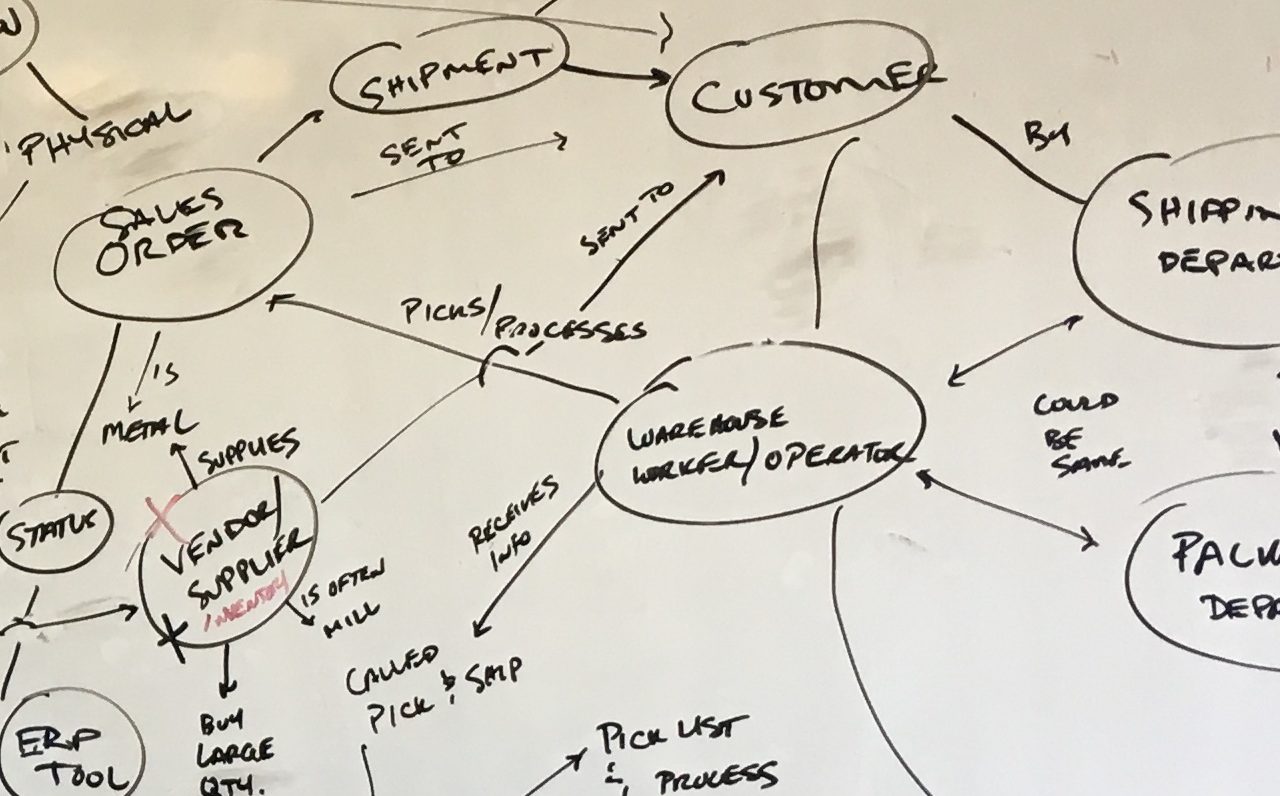
When many people hear “digital transformation”, they think about technology and systems — that years long project to finally get off the old mainframe, the big move to a new SaaS solution. But those changes to technology are fruitless if they’re not targeted to optimize processes, and ultimately, to reduce problems for employees and customers.
Successful digital transformation strategy starts with humans — technology comes later. Starting with people, their goals and pain points, and the context of their interactions with your company, means that solutions are targeting meaningful outcomes, not just new software.
Transformation programs are critical for your company’s present and future. But in order to gain the most value from these large, expensive initiatives, companies must follow a user-centered process. A human-centered transformation strategy, after all, can break down internal silos, focus on the people that matter, and ensure systems are deeply understood across the board.
But isn’t it about technology?
Yes… and no. By definition a digital transformation project does have technology as an output — but the goal is the process optimization that technology supports. Focusing narrowly on technical solutions may get you faster, more modern infrastructure, but misses opportunities for bigger, more impactful process improvement. Digital product strategy projects provide a window of opportunity, where large scale change is already happening and the cost of additional change may be reduced (i.e. if retraining is already inevitable, an additional process change won’t require additional retraining).
“Less digitally mature organizations tend to focus on individual technologies and have strategies that are decidedly operational in focus. Digital strategies in the most mature organizations are developed with an eye on transforming the business.”
2015 Digital Business Global Executive Study and Research Project
Zooming out, thinking about people and the systems in which they interact ensures your focus is not so narrow as to miss critical opportunities. This allows you to define solutions, both technology and process-oriented, that realize transformation that scales beyond technical enhancements.

UX Design Process 💖 Digital Transformation
Ok, so focus on people. How do you do that? The UX design process is suited to just such a challenge. Depending on how (or if) your organization employs UX design, you may think of it narrowly as a means for directing product features and screens. The process, however, can scale well beyond products — after all, the central component of UX design is understanding holistic goals and contexts, beyond the product or service being targeted.
Digital transformation projects start with some recognized needs — existing tools are hard to use, impossible to maintain, too expensive, etc. The root cause, and holistic effect of change, are less likely to be fully understood. The UX design process is an effective tool for understanding a problem space and all the people and systems that touch it. The process also serves to unearth why that problem exists (how much of it is really the underlying technology?) and then develop a robust course of action geared toward the complete ecosystem, including but not limited to technology.
UX design in digital transformation strategy can help ensure both current and future needs are met, optimize planning and roadmapping, streamline later product design, and break down silos to allow for effective collaboration across the company.
“As a leader in operations, I’ve seen the value of focusing on the user experience brings to digital transformation projects. Project teams, and engineers are all well intentioned, however without the user insight they default to what makes sense to them, or what is the technical path of least resistance. These subtle decisions have great impact on usability and adoption of digital tools, which translate directly to productivity and return on investment.”
— DAN FERRERA, Divisional Vice President at HCSC (BLUE CROSS BLUE SHIELD)
Examples of Digital Transformation Strategy
A recent client, as part of a large, multi-year digital transformation strategy project in the healthcare UX space, wanted to improve the process for a subset of their employees. A similar initiative had previously been attempted, with a new and more modern tool built addressing one of the employees’ primary tasks, but adoption was not what was hoped — one of the 70% of all digital transformation projects that failed. That project started with technology, a better interface, rather than a focus on human-centered process improvement.
Fuzzy Math approached the same problem, but started with research — what are these employees actually doing today? What are the problems they run into, and how do they solve them with the tools they have now? It’s important to note that we focused our attention not on what were they trained to do, but on what’s actually happening everyday. After observing employees across roles and teams, the real problem became clear: it was the ecosystem, not any one tool. In fact, it was that they had so many tools — the impact of improving any single tool was diluted, and could never solve issues around inconsistency and attention-switching.
Starting with “just make the application better” would’ve resulted in a better application, but a mostly unimproved process. Instead, by recognizing the larger-scale issues, our team was able to work across teams within the client organization to develop a digital transformation strategy that approached the broader ecosystem as the problem space. Solving for the ecosystem meant expanding the scope to a platform, rather than a single product, but meant that the outcome would be addressing the true root cause of issues today, and avoid further adoption issues.
How to make it work
In most organizations, business leaders identify problems to solve and decide on general parameters to address them, packaged as a digital transformation project. It’s at this point, when overall business goals are established, that the UX design process should begin. It may be tempting to jump straight in and spin up development teams to start rewriting code and planning data migrations — but starting with human-centered research and design, before implementation, can save time later, ensuring that the blueprints are sound before the foundation is laid.
The UX design process at the onset should be strategic in nature, not concerned with product design, or even necessarily thinking about “products”. The team working on UX design should develop a strong working relationship with all business teams involved in the digital transformation strategy, including a schedule with enough time to complete effective research, and ongoing check-ins to keep everyone in the loop. As this is new to many organizations, the UX team should be prepared to educate stakeholders on the types of research and strategy work expected, and advocate for the time and space required.

User Research
Based on the objectives laid out for the digital transformation project, develop and execute a research plan to test hypotheses, uncover root cause, and develop a deep understanding of the entire problem space. This research should, at a minimum, include interviews and observations touching on the key processes affecting the goals of the project. Ethnographic research, where people are observed performing tasks in their typical environment (as opposed to a research lab or conference room), is highly valuable. Understanding the space around technology is in many ways as critical as understanding how technology itself is used.
Shared Foundation & Insights
From research, the UX design team should produce documentation that tells the story of what they observed — the people, the systems, the problems that exist today. This documentation of UX research will help align the business teams around solutions, and provide insight to everyone involved about people and processes they may not directly interact with. Having this from the very start will ensure that once it’s time to ramp up the rest of the project teams, they can start from a shared understanding of what they’re working towards and what the impact will be. Personas and journey maps are key UX deliverables for communicating across teams.

Strategy & Planning
Finally, the team should work with stakeholders across the business to define strategic roadmaps for achieving project objectives, informed by the research. Parts of this roadmap will typically be defined outside of research — a decision, perhaps, to upgrade from a legacy version to the newest version of some underlying software. In these cases, the team should understand how those decisions impact other proposed changes and structure the roadmap accordingly.
Implementation
After the roadmap is developed, the implementation of the digital transformation strategy will start in earnest, with many teams ramping up simultaneously. The UX design team at this point may pivot to more tactical initiatives — typically designing products defined in the roadmap. This team not only has the benefit of working toward a product already aimed toward user needs, but also has a lot of the research work already complete, catalyzing their design process.
Supporting Digital Transformation Strategies
Ongoing research throughout the digital transformation project should be used to validate that the work in progress will meet the goals of the project, and to plan and refine the change management processes to be employed as work goes live to its intended audience. Roadmaps should be continually reviewed to evaluate progress and updated when needed to reflect learnings to date.
Enhanced Digital Transformation with UX Design
Digital transformation projects are long, expensive initiatives — it’s worth doing right. Diving straight into implementation is tempting, but risks at best missing big opportunities and at worst solving the wrong problems. UX design provides a trusted methodology to better understand the problems you’re trying to solve, identify with the people affected, achieve internal alignment and drive decision making.
Wondering how to apply this strategy to your digital transformation project? We can help.
